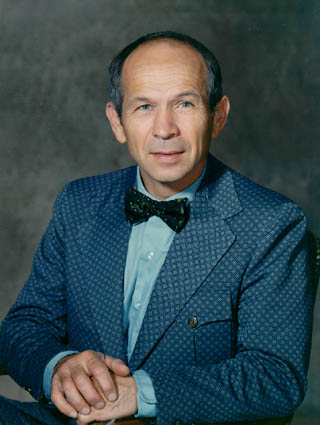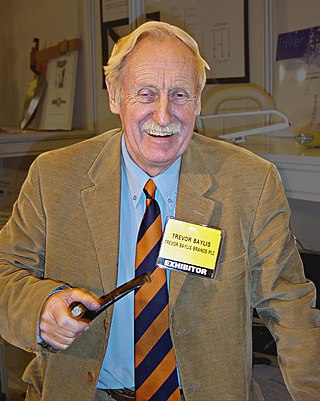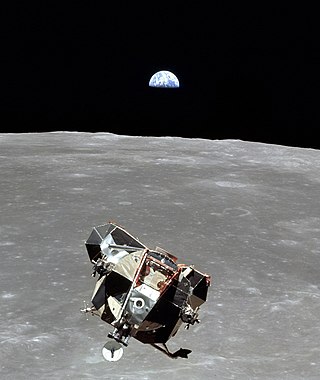Related Research Articles

Robert Norton Noyce, nicknamed "the Mayor of Silicon Valley", was an American physicist and entrepreneur who co-founded Fairchild Semiconductor in 1957 and Intel Corporation in 1968. He is also credited with the realization of the first monolithic integrated circuit or microchip, which fueled the personal computer revolution and gave Silicon Valley its name.

Philo Taylor Farnsworth was an American inventor and television pioneer. He made many crucial contributions to the early development of all-electronic television. He is best known for his 1927 invention of the first fully functional all-electronic image pickup device, the image dissector, as well as the first fully functional and complete all-electronic television system. Farnsworth developed a television system complete with receiver and camera—which he produced commercially through the Farnsworth Television and Radio Corporation from 1938 to 1951, in Fort Wayne, Indiana.

Emile Berliner originally Emil Berliner, was a German-American inventor. He is best known for inventing the lateral-cut flat disc record used with a gramophone. He founded the United States Gramophone Company in 1894; The Gramophone Company in London, England, in 1897; Deutsche Grammophon in Hanover, Germany, in 1898; and Berliner Gram-o-phone Company of Canada in Montreal in 1899. Berliner also invented what was probably the first radial aircraft engine (1908), a helicopter (1919), and acoustical tiles (1920s).
Jerome "Jerry" Hal Lemelson was an American engineer, inventor, and patent holder. Several of his inventions and works in the fields in which he patented have made possible, either wholly or in part, innovations like automated warehouses, industrial robots, cordless telephones, fax machines, videocassette recorders, camcorders, and the magnetic tape drive used in Sony's Walkman tape players. Lemelson's 605 patents made him one of the most prolific inventors in American history.

Charles Joseph Van Depoele was an electrical engineer, inventor, and pioneer in electric railway technology, including the first trolley pole.

A corkscrew is a tool for drawing corks from wine bottles and other household bottles that may be sealed with corks. In its traditional form, a corkscrew simply consists of a pointed metallic helix attached to a handle, which the user screws into the cork and pulls to extract it. Corkscrews are necessary because corks themselves, being small and smooth, are difficult to grip and remove, particularly when inserted fully into an inflexible glass bottle. More recent styles of corkscrew incorporate various systems of levers that further increase the amount of force that can be applied outwards upon the cork, making easier the extraction of difficult corks.

Maxime Allen "Max" Faget was a Belizean-born American mechanical engineer. Faget was the designer of the Mercury spacecraft, and contributed to the later Gemini and Apollo spacecraft as well as the Space Shuttle.

Trevor Graham Baylis was an English inventor best known for the wind-up radio. The radio, instead of relying on batteries or external electrical source, is powered by the user winding a crank. This stores energy in a spring which then drives an electrical generator. Baylis invented it in response to the need to communicate information about AIDS to the "people of Africa". He ran a company in his name dedicated to helping inventors to develop and protect their ideas and to find a route to market.
An interference proceeding, also known as a priority contest, is an inter partes proceeding to determine the priority issues of multiple patent applications. It is a proceeding unique to the patent law of the United States. Unlike in most other countries, which have long had a first-to-file system, until the enactment of the Leahy-Smith America Invents Act (AIA) in 2011, the United States operated under a first-to-invent. The interference proceeding determines which of several patent applications had been made by the first inventor.
Sufficiency of disclosure or enablement is a patent law requirement that a patent application disclose a claimed invention in sufficient detail so that the person skilled in the art could carry out that claimed invention. The requirement is fundamental to patent law: a monopoly is granted for a given period of time in exchange for a disclosure to the public how to make or practice the invention.
In patent law, an inventor is the person, or persons in United States patent law, who contribute to the claims of a patentable invention. In some patent law frameworks, however, such as in the European Patent Convention (EPC) and its case law, no explicit, accurate definition of who exactly is an inventor is provided. The definition may slightly vary from one European country to another. Inventorship is generally not considered to be a patentability criterion under European patent law.
Tesla Electric Light and Manufacturing Company was an electric lighting company in Rahway, New Jersey that operated from December 1884 through 1886.

A timeline of United States inventions encompasses the ingenuity and innovative advancements of the United States within a historical context, dating from the Contemporary era to the present day, which have been achieved by inventors who are either native-born or naturalized citizens of the United States. Patent protection secures a person's right to his or her first-to-invent claim of the original invention in question, highlighted in Article I, Section 8, Clause 8 of the United States Constitution which gives the following enumerated power to the United States Congress:
To promote the Progress of Science and useful Arts, by securing for limited Times to Authors and Inventors the exclusive Right to their respective Writings and Discoveries.
The history of United States patent law started even before the U.S. Constitution was adopted, with some state-specific patent laws. The history spans over more than three centuries.

A timeline of United States inventions (1890–1945) encompasses the ingenuity and innovative advancements of the United States within a historical context, dating from the Progressive Era to the end of World War II, which have been achieved by inventors who are either native-born or naturalized citizens of the United States. Copyright protection secures a person's right to his or her first-to-invent claim of the original invention in question, highlighted in Article I, Section 8, Clause 8 of the United States Constitution which gives the following enumerated power to the United States Congress:
To promote the Progress of Science and useful Arts, by securing for limited Times to Authors and Inventors the exclusive Right to their respective Writings and Discoveries.

Bahco is a Swedish brand within the hand tool industry, which is now part of SNA Europe, part of Snap-on. Its roots go back to the industrial revolution in Sweden in the late eighteen hundreds, starting with innovations such as the pipe wrench and the modern adjustable wrench. Since then, the product range has expanded with a total assortment of products that today includes over 7000 hand tools.

A timeline of United States inventions (1946–1991) encompasses the ingenuity and innovative advancements of the United States within a historical context, dating from the era of the Cold War, which have been achieved by inventors who are either native-born or naturalized citizens of the United States. Copyright protection secures a person's right to his or her first-to-invent claim of the original invention in question, highlighted in Article I, Section 8, Clause 8 of the United States Constitution which gives the following enumerated power to the United States Congress:
To promote the Progress of Science and useful Arts, by securing for limited Times to Authors and Inventors the exclusive Right to their respective Writings and Discoveries.

The Leahy–Smith America Invents Act (AIA) is a United States federal statute that was passed by Congress and was signed into law by President Barack Obama on September 16, 2011. The law represents the most significant legislative change to the U.S. patent system since the Patent Act of 1952 and closely resembles previously proposed legislation in the Senate in its previous session.

Oscar H. Banker was an Armenian American inventor who patented a number of works, including an automatic transmission for automobiles, the needleless inoculation gun, the primary controls of the first Sikorsky helicopter, and power steering. He is considered by some as the "father of automatic transmission." He is accredited as the inventor of the first practical automatic transmission, though Alfred Horner Munro of Canada patented an automatic transmission 14 years before Banker.
References
- ↑ "Herbert Allen '29". 9 May 2012.
- ↑ https://web.archive.org/web/20131225091829/http://www.lecreuset.ca/About-Us2/Our-History/ quote: "Then, in 1979, Herbert Allen; a prolific inventor, invented Screwpull.. Today the Screwpull brand name is recognized world wide."
- ↑ "Herbert Allen, Inventor, Houston, TX".
- ↑ Memorial Tributes. 1992. doi:10.17226/1966. ISBN 978-0-309-04689-3.